How We Visualise Canterbury Castle
Sept 15 - Dec 12
Verena Holmes Gallery
Verena Holmes Building, CCCU
North Holmes Road
Canterbury, CT1 1QU
Normal Opening Hours: Mon-Fri 10:00 - 16:00
(Please note that occasionally the exhibition may be closed due to University activities)
How We Visualise Canterbury Castle opens this week in the Verena Holmes Gallery and will run until December 12th. This exhibition explores the research and design process of Visualising Canterbury Castle, a nine-month research project that will produce a digital reconstruction of Canterbury Castle’s Norman keep in the 12th century, funded by the Castle Studies Trust.
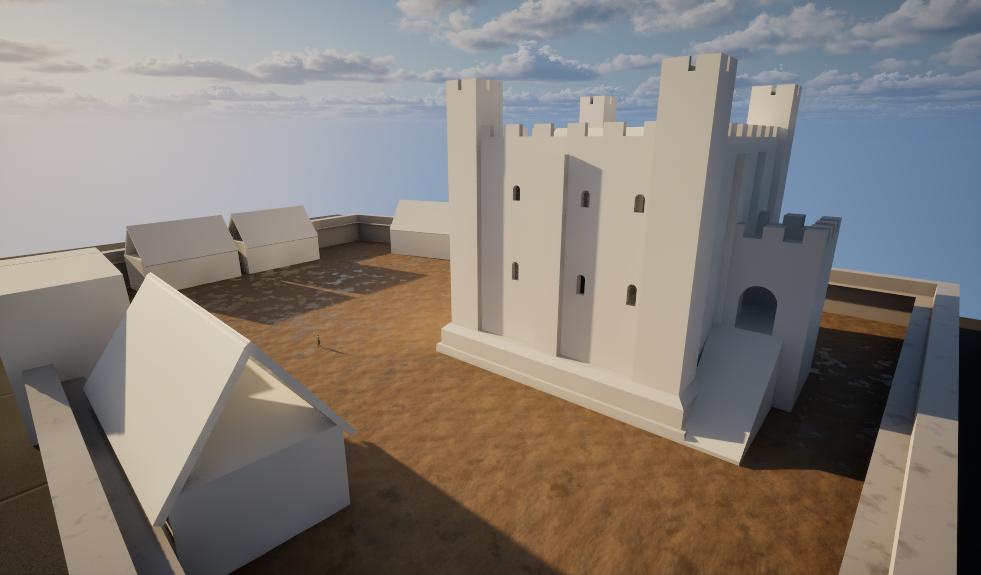
Canterbury Castle is one of c.104 national examples of a tower keep castles (Scheduled Monument Number 1005194), and one of 20 Norman Castles built in Kent. It is part of a series of royal castles on the route from Dover to London and identified as being one of the earlier examples of the period usually dated to between 1085-1125, with archaeological evidence suggesting a date c.1100-1125.
Many people do not realise that Canterbury even has a castle. It has been closed to the public since 2018 due to safety concerns, and is currently hidden by scaffolding in preparation for its reopening in 2026. The role that the castle has played in shaping the city has also been overshadowed by other internationally-recognised structures, namely Canterbury Cathedral and St Augustine’s Abbey.
This project hopes to support public awareness of the castle by creating a digital reconstruction from existing excavation data in Unreal Engine 5, a 3D computer graphics games engine. The work is enriched by stakeholders from heritage, education, and cultural sectors who have participated in co-design days throughout the project. This group considers both the historical content of the digital experience as well as how potential users will engage with the eventual outputs. The comments, suggestions, and feedback gathered at these sessions are evaluated by the project team and inform the subsequent iterations of the castle. An early prototype was also showcased at this year’s Medieval Pageant and Family Trail where over 400 people engaged with the project and submitted feedback on the experience.
Unlike most exhibitions, the work in this show is still in development, and the display will continue to change throughout the coming months. Instead of showcasing a completed project, How We Visualise Canterbury Castle will share the developmental stages of the castle and how it has evolved through the co-design sessions and public playtests. This is represented by showing different phases of the castle and colourful sticky notes that show some of the comments that have been collected throughout the project.
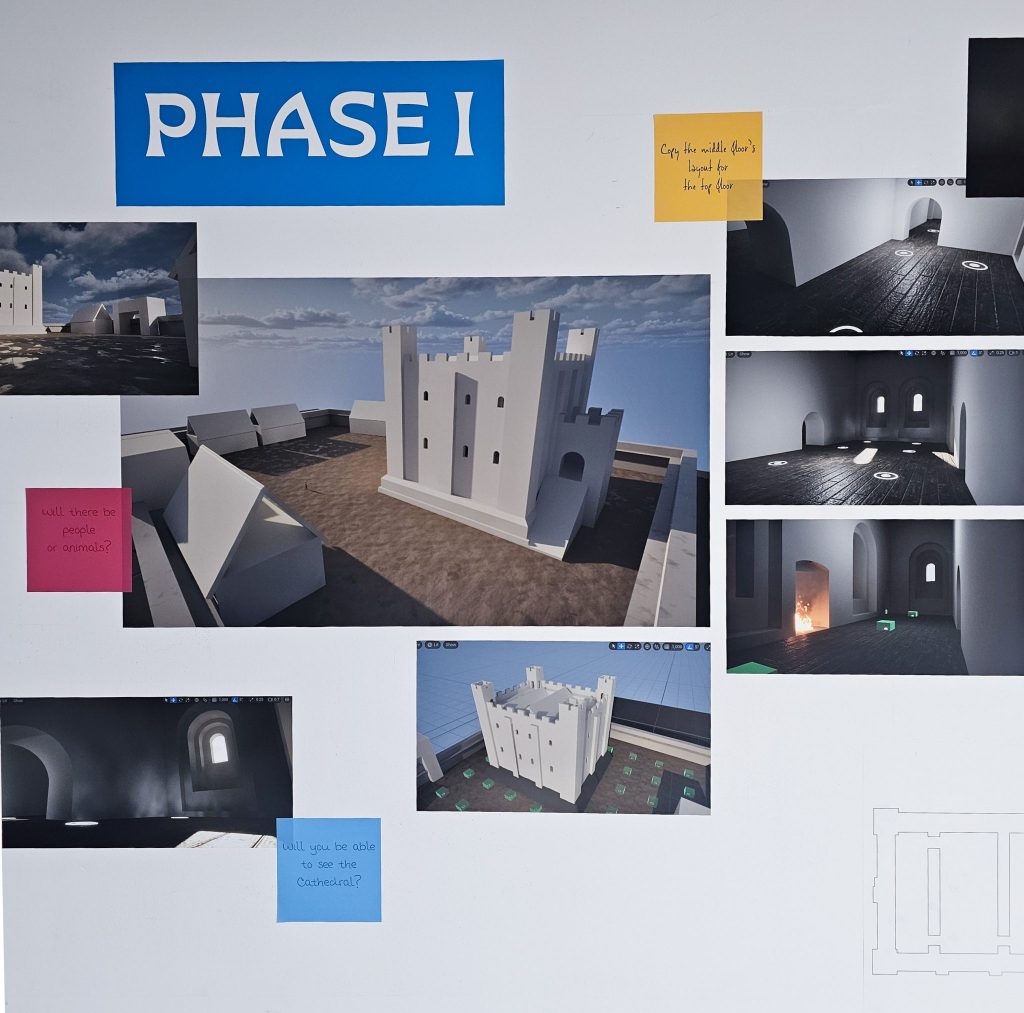
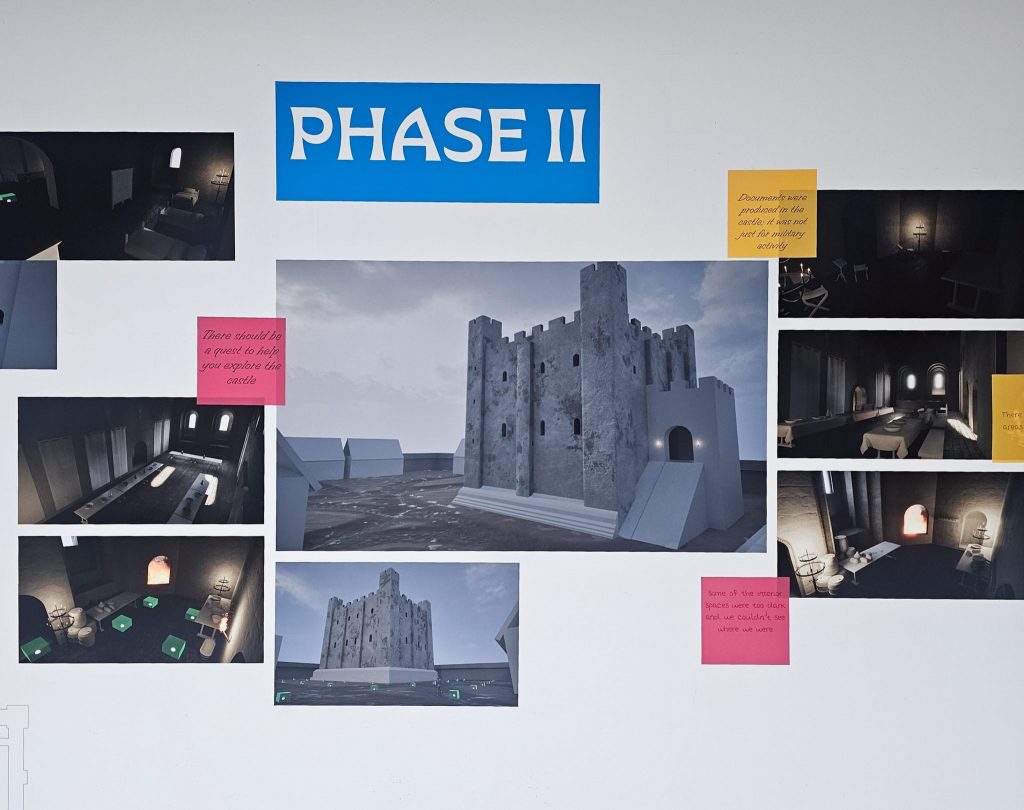
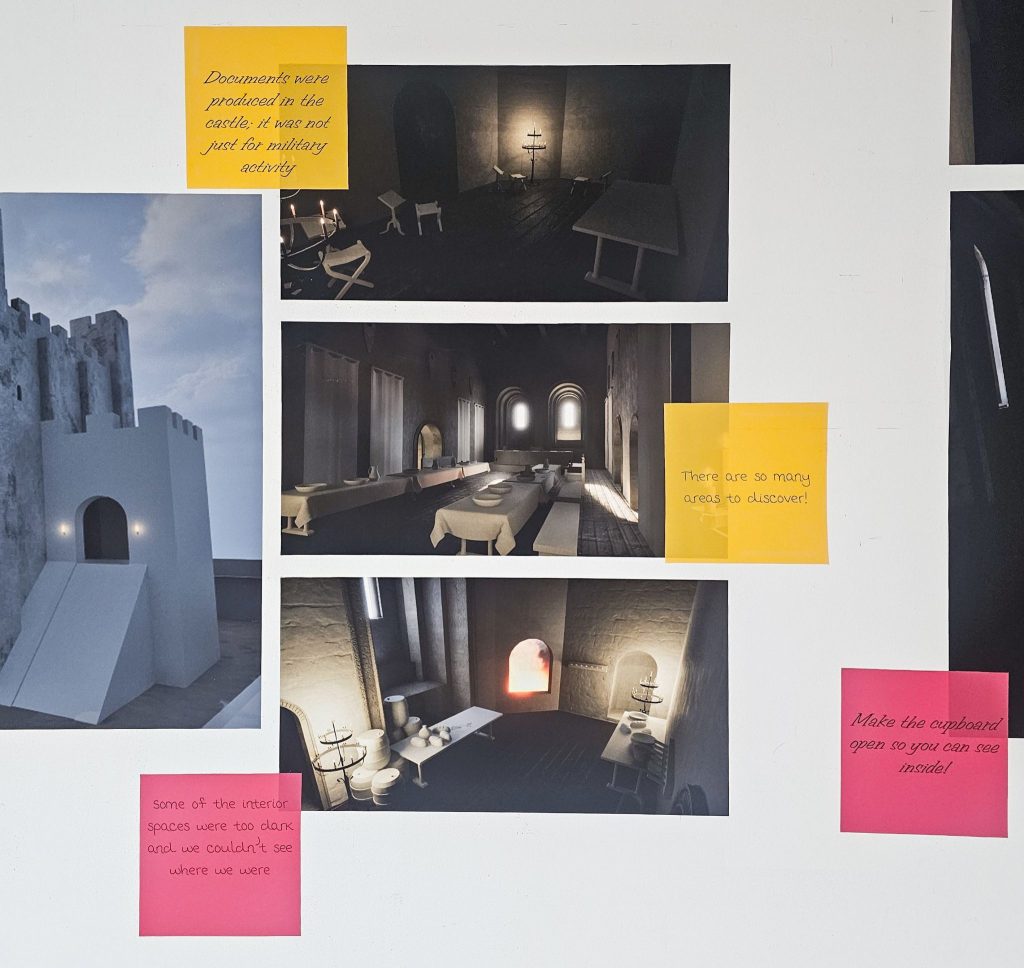
At the centre of the exhibition is a touchscreen monitor with the most recent version of the reconstruction. You can explore the castle to see what the interior spaces of Canterbury castle might have looked like in the first century of its construction. You will also see that some areas, particularly the outdoor spaces, currently lack detail. These will be developed over the next few weeks.
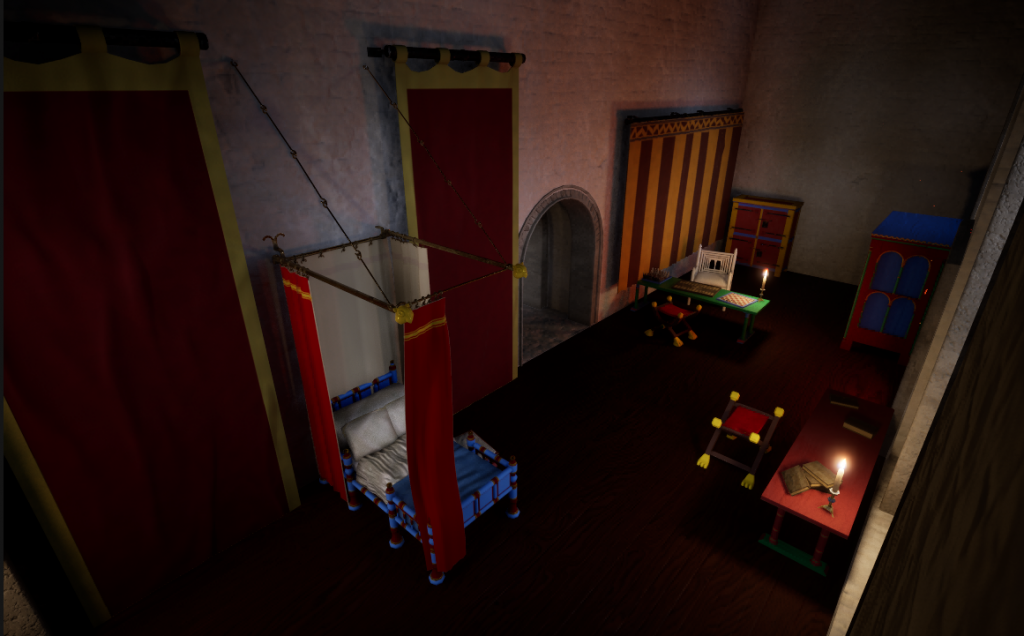
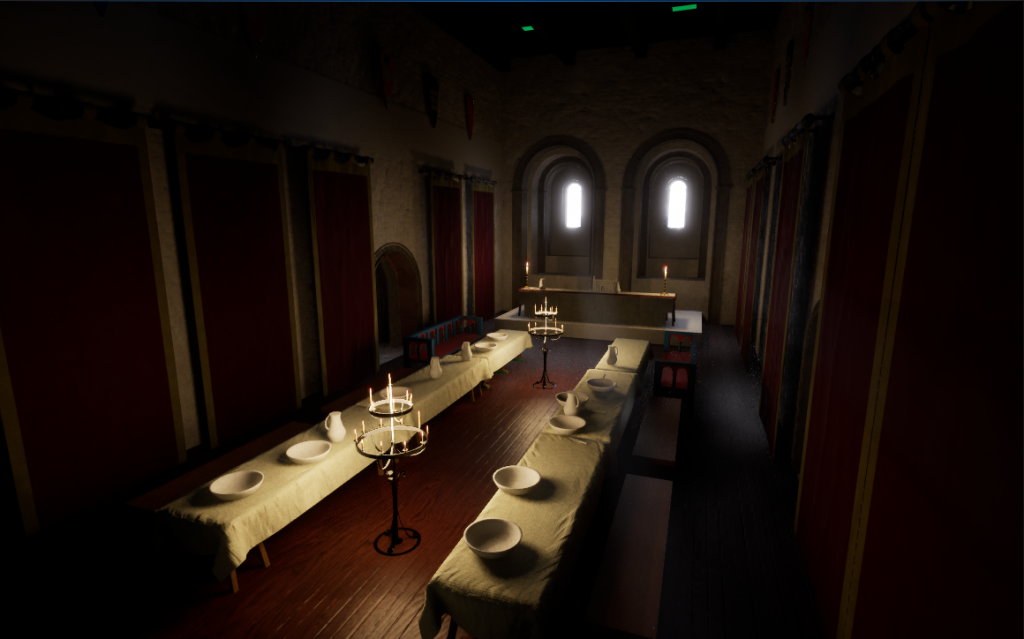
The digital castle has been developed by Mike Farrant, Technical Lead for the project. Mike has built the castle in Unreal Engine 5 (a 3D graphics engine) using existing excavation information. This model has been explored and critiqued in three co-design sessions by subject-specialists from cultural, heritage and education sectors, and then .
The exhibition also showcases the work of CCCU students Ethan Serfontein and Joseph Seare, who joined the project over the summer as 3D production interns, working with Mike to create a range of digital assets to help furnish the environment. Ethan and Joseph have both just started their third year in CCCU’s Games Design course and this experience allowed them to develop their 3D modelling skills and also gain insight into producing assets that are informed by research.
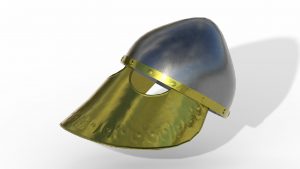
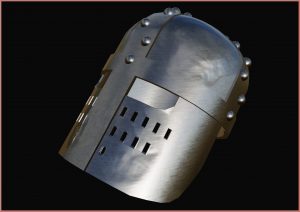
The Visualising Canterbury Castle project team has been drawn from staff from across CCCU and includes Dr Katie McGown (Principal Investigator), Mike Farrant (Technical Lead), and co-investigators Dr Catriona Cooper, Prof Leonie Hicks, Dr Sam Holdstock, and Prof Alan Meades.
 Arts and culture
Arts and culture Katie McGown
Katie McGown 766
766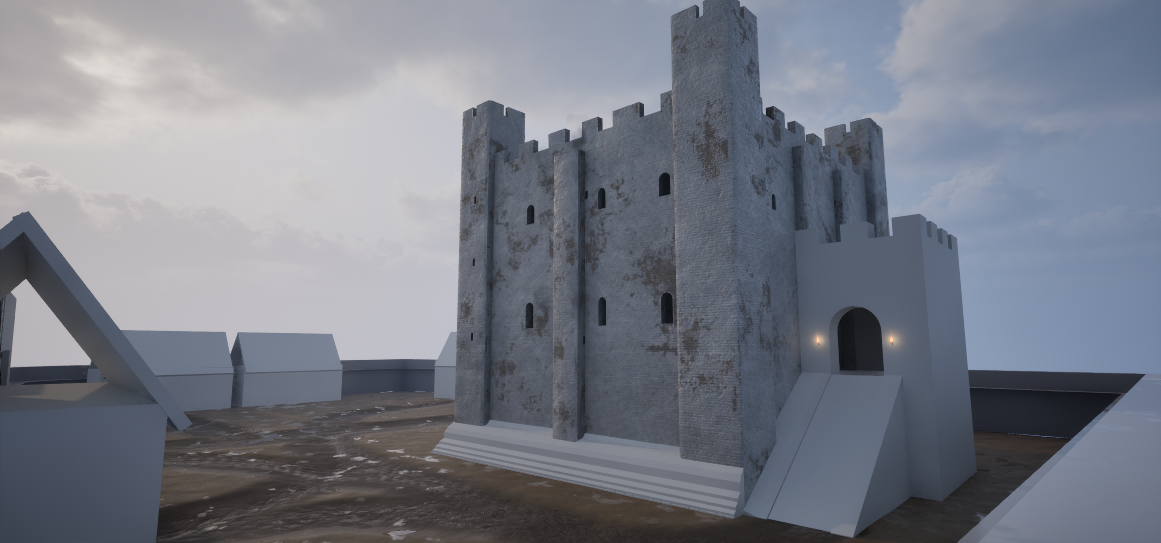



Great to see this work being done. Was always curious about the Ruins. Always parked in Castle Street Car Park so one day, prior to 2018, I visited. Not much to see but as a history lover, great to walk in the steps of the famous of the past. Eagerly looking forward to the opening.